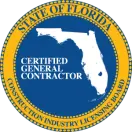Roofs are one of the most important components of a home, providing protection from weather and other elements. As such, it is essential to understand the different types of roofing damage and how to spot them.
This article will provide an overview of common roofing damages and give insight into spotting these issues before they become severe problems.
Roofing materials can suffer from wear-and-tear over time due to their exposure to harsh weather conditions. Understanding what type of damages may be occurring on a particular roof allows for preventative measures or timely repairs that keep roofs in good shape for longer periods of time.
Spotting potential issues early also helps avoid costly repair bills down the road.
Structural Damage
Structural damage is a serious issue when it comes to roofing. Accidental damage, such as hail or falling branches can cause significant harm to the structure of your home’s roof and should be addressed immediately.
Termite damage, while not always visible at first glance, can create invisible weaknesses that can lead to extensive repair costs if left unchecked.
It is important for anyone with a roof over their head to understand what kind of structural damage can occur so they know how best to prevent it from happening in the future.
Regular inspections by an experienced professional are key in identifying any existing issues before they become too costly and difficult to fix.
Early detection of problems like termite infestations ensures that the repairs needed will be minimal and effective.
Proper maintenance of your roof is essential for ensuring its longevity and preventing more expensive damages down the road.
Hail Damage
Structural damage can cause major problems to any roof and should be addressed as soon as possible.
Hail damage is another type of issue that homeowners need to look out for, especially in areas where thunderstorms are common.
The size of hailstones can range from the size of a pea up to two inches in diameter depending on the severity of the storm.
Hailstones can dent siding and break windows, but it’s most damaging when it comes into contact with roofs.
It’s therefore important for those living in hail-prone regions to invest in hailproofing systems or regular maintenance checks so that they may detect any issues early on before more serious structural damage occurs.
Taking preventative measures such as these will help lessen long-term costs associated with repairing hail damaged roofs.
Regular roof inspections also ensure that minor repairs continue to remain minor rather than becoming more expensive fixes down the line.
Homeowners who choose not to take action may face extensive repair bills if larger scale damages occur over time due to lack of maintenance or proper roof care.
Wind Damage
Wind damage is a concern for roofing systems. When high winds are present, the roof can be at risk of being blown off or having shingles torn away from the underlying material.
Wind resistance ratings should be taken into consideration when selecting a roof type as some materials offer better protection than others in certain wind speeds. For example, asphalt and wood shingle roofs have lower wind-resistance ratings than metal or tile roofs, which means they may not withstand high winds as well.
The installation method also plays an important role; proper fastening techniques help secure the roof against strong gusts while inadequate methods can lead to blow-offs and other damages. In addition, regular maintenance such as cleaning gutters and removing debris that accumulates on the surface can improve the wind resistance of any system.
Knowing these factors will help homeowners choose a suitable solution for their particular environment and ensure long lasting performance even during extreme weather conditions.
Leaks And Water Damage
Water damage is an all-too-common problem for roofing systems. It can occur in the form of leaks or drainage issues as a result of improperly installed shingles and flashing, insufficient attic ventilation, or snow buildup on the roof surface.
Poor maintenance over time also leads to water damage from gradual decay of materials such as shingles, mortar joints, and flashings.
Inspectors should look closely at areas that are more likely to collect moisture and be aware of signs like dark streaks caused by algae growth, curled edges on old asphalt shingle roofs, sagging decks, cracked sealant around vents and chimneys, blistered paint inside walls near eaves, discolored ceilings and interior walls due to condensation build-up under the roof deck sheathing.
The presence of any of these symptoms indicates that further investigation is necessary since even small problems can lead to extensive damage if left unchecked.
Moss And Algae Damage
Moss and algae damage can be just as damaging to a roof’s integrity as water damage. Preventing the growth of moss and algae is key in maintaining roof longevity, as these elements are prone to discolorations that can affect long-term performance.
The most common type of moss and algae damage occur when organic material accumulates on top of shingles or other materials used for roof construction. This organically built up matter can lead to mold formation which results in potential health concerns such as allergies and asthma. Additionally, it causes an unsightly appearance if not properly addressed.
In order to prevent the growth of moss and algae, proper maintenance should include cleaning off any debris from the surface of the roof, including removal of any leaves or twigs that may have fallen onto the structure during storms or winds. Further prevention includes using sandpaper to remove buildup on surfaces where dirt has accumulated over time, ensuring adequate ventilation throughout attic spaces, and installing zinc strips along ridges in order to discourage new growth from occurring.
Taking proactive measures against moss and algae damage will help protect roofs from costly replacements down the road due to permanent discolorations caused by prolonged exposure. It’s important to keep an eye out for areas around pipes vents and drains where moisture could be present – this is often prime breeding ground for Moss/Algae so regular inspection is recommended.
Fire Damage
The sight of a burning building is one that can be both terrifying and awe-inspiring.
After the flames have been extinguished, what remains are the charred remnants of combustible materials and other destroyed items.
Fire damage to roofs can range from minor charring or cracking due to heat exposure to complete destruction of structural components like rafters and trusses.
To prevent fire damage, it’s important for homeowners to ensure their home has adequate protection against fires.
This includes clearing away any combustible material around the house, installing smoke detectors in all areas of your home, making sure electrical wiring is up-to-date and properly grounded, checking chimneys regularly, and keeping flammable liquids stored in approved containers away from living spaces.
Additionally, having an emergency plan in place should there ever be a need to evacuate quickly will help protect your family and property.
Uv Damage
Fire damage is a common consequence of roofing issues, and it can have devastating impacts on the home.
Moving on from this type of damage, UV exposure is yet another threat to roofs that homeowners should be aware of.
Sun damage accumulates over time as prolonged UV exposure affects shingle materials by making them brittle and reducing their lifespan.
Asphalt shingles are particularly vulnerable to sun damage due to their dark coloration which absorbs more heat than lighter shades.
Additionally, those residing in hotter climates may experience greater rates of deterioration since the higher temperatures increase the intensity of the UV radiation present in sunlight significantly.
Homes with metal or tile roofs will not suffer direct sun damage due to material composition but they still need protection from ultraviolet rays; specialized coatings applied after installation can provide added defense against any potential effects from long-term UV exposure.
In order for adequate protection it is important to use an appropriate coating depending on the material used for the roof tiles or sheet metal covering.
Maintaining these protective layers through regular inspection and reapplication when necessary will help minimize any risk associated with solar degradation.
Ultimately, protecting your roof from both fire and sun related damages is essential for preserving its life span and ensuring a safe household environment.
Conclusion
Identifying roofing damage can be essential for maintaining the integrity of a home’s structure. Structural damage, hail damage, wind damage, leaks and water damage, moss and algae growth, fire damage, and UV damage are all types of destruction that must be monitored in order to ensure the safety of a building’s inhabitants.
It is important to inspect roofs regularly and take action when any signs of deterioration first appear. With this knowledge, homeowners will be better equipped to identify potential issues before they become major problems.
By being proactive about recognizing evidence of roofing damage right away, homeowners may save themselves money on costly repairs down the road.
















